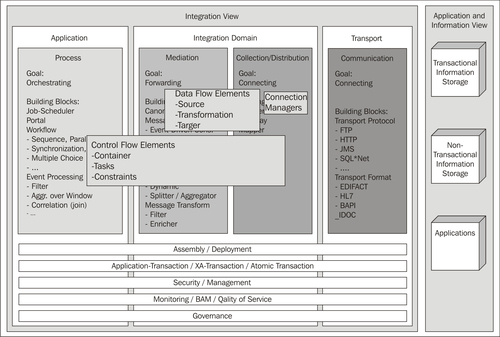Microsoft SQL Server Integration Services (SSIS) is a comprehensive data integration platform that is used to transport, call, transform, and consolidate information from disparate sources and to upload it to several different systems. It is the successor to Data Transformation Services (DTS).
The SSIS is primarily intended for data integration tasks.
The following diagram shows the components of Microsoft SQL Server Integration Services in the integration blueprint:

The following table holds a description of the components of SQL Server Integration Services, as shown in the preceding diagram:
|
Component |
Description |
|---|---|
|
Connection Managers |
A Connection Manager is a logical representation of a connection. SQL Server Integration Services provides a variety of different connection managers that packages can use to create connections with a range of data sources and servers. The following connection types are supported, among others: ADO, ADO.NET, Excel, file, flat file, FTP, HTTP, MSMQ, MSOLAP, OLEDB, ODBC, and SMTP. |
|
Control Flow Elements |
SQL Server Integration Services provides three different types of Control Flow Elements:
|
|
Data Flow Elements |
SQL Server Integration Services provides three different types of Data Flow components:
|
